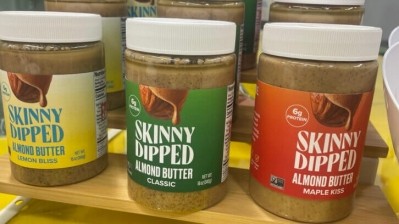Natural Products Expo West
Plant-based products’ long-term success may hinge on sharing the plate with animal products, SPINS data suggests

“Progress is not linear,” but rather a “stepwise process” with ups and downs and starts and stops, SPINS CEO Jay Margolis told attendees at Natural Products Expo West last month.
“Everyone knows [plant-based sales received a] shock to the system in 2020. A good shock to the system in 2020 and 2021. And everyone is very caught up in whether or not that progress is continuing at the same clip. But, the reality is, the forecast growth for plant-based in the US using 2016, 2017, 2018 and 2019 data shows we are where we are supposed to be. So, we should not get caught up in the fact that there was this big boom in 2021 and now things have softened a little bit,” he explained.
SPINS data shows retail sales of plant-based foods increased 79% in the past six years, from $4.5bn in annual sales in 2018 to $8.1bn in 2023, based on six product categories. Likewise, Kroger Shopper Data from 84.51 Real Time Insights Survey in 2023 shows 50% of US adults buy plant-based foods and 96% of them have either maintained or increased their plant-based consumption compared to a year ago.
While these are promising figures, the plant-based industry – like any other category – will need to work to drive future growth, Margolis said.
He acknowledged some growth strategies may feel like “sacrilege,” but he urged stakeholders to keep an open mind and eye on what matters – which is “stepwise progress” with additional trial and adoption beyond vegans and vegetarians.
For example, he said, plant-based brands need to take a less siloed approach, and rather than position their products in opposition to animal-based options, offer them as a complement or component of the meal alongside animal-based products.
The Impossible breakfast sandwich offered at Starbucks is an example, he said. It includes Impossible sausage with dairy cheese.
“We’ve got to find ways to introduce plant-based into their diet in a different way,” and this strategy has led to increased adoption of plant-based in foodservice, Margolis added.
Another strategy is to position plant-based products as a solution for consumers following other diets, including grain-free, paleo or Keto.
“When we start to think about the marketing and audience that we’re appealing to, there are people beyond the folks that are the core audience who are actually looking to buy products like this. And they are not buying them because they are plant-based. [These products] are meeting other dietary requirements and they just so happen to be plant-based,” Margolis said.
Who buys plant-based and how important is price?
To craft effective marketing campaigns, plant-based manufacturers need to know who their existing consumers are, their priorities and the types of products and innovations that most pique their interest.
According to SPINS, the plant-based consumer is diverse – spanning nearly equally across ages, with a slight increase among consumers older than 65 years (23.5% compared to about 19% for other groups).
Shoppers across all income brackets also buy plant-based, but they do skew more affluent with 41.2% of consumers in the upper income per capita, 37.4% in the middle income per capita and only 21.4% in the lower income per capita bracket, Linette Kwon, data and consumer insights analyst at the Plant Based Food Association, explained at Expo West.
The difference in plant-based consumers’ economic level “could be due to higher prices due to lack of subsidies,” she said.
Despite the “challenging economic conditions” that drove up the price of plant-based food alongside most other categories, “there was only a slight dip in dollar sales from 2022 to 2023” from $8.2bn to $8.1bn (a 2.2% decline year-over-year but a 2% compound annual growth on a two-year stack, she said. This demonstrates “the resilience of the industry,” she added.
Some plant-based categories are more ‘resilient’ than others
Some categories appear more resilient than others. SPINS data shows two-year CAGR growth in 2023 in plant-based milk (up 4.2%), plant-based creamer (16.2%), plant-based protein supplements (9.9%), plant-based yogurt (0.7%), plant-based butter (2.3%), plant-based bars (10.8%), plant-based RTD beverages (9.3%), tofu, tempeh and seitan (3.9%), plant-based dips and spreads (3.3%), plant-based baked goods (10.8%), plant-based condiments and dressings (3.3%) and plant-based eggs (5.2%).
Plant-based meat and seafood saw the two-year sales CAGR decline of 6.6% alongside plant-based meals, which fell 7.9%, plant-based ice cream (down 7.4%) and plant-based cheese (down 5.4%).
Lessons from plant-based milk, creamers success
Kwon attributed the success of plant-based milks and creamers to the wide variety of options and flavors, and Margolis also called out their cleaner labels compared to conventional legacy options – factors that will likely influence consumers in other categories as well.
Some of the most popular flavors, according to SPINS data, were cinnamon, coffee/mocha and cookie/cookie butter/cake, suggesting plant-based consumers, like many other shoppers, are drawn to the comfort of the familiar as well as indulgences.
Within creamers, the fastest growing base is coconut – albeit off a small base – at 24.8% to $126m in the 52 weeks ending Dec. 3, 2023.
The category leader – almond – dipped 3.6% to $1.6bn in the same period, while oat rose 7.6% to $687m. Soy also increased 3.4% to $208m. Blends and rice-milk bases, already a tiny part of the market, also fell 9.2% to $72m and 4.2% to $36m, respectively, according to SPINS data.
New forms, flexible uses could boost plant-based meat sales
While units of plant-based meat fell 19.4% in 2023 over the prior year, some forms grew – suggesting consumers may be looking for different usage occasions beyond basic patties, sausages and grounds.
According to SPINS data, sales of shreds, chunks and strips increased 9.7% to $81m, while sales of fillets, steaks and cutlets grew event faster off a smaller base at 17.2% to $27m.
Tofu, tempeh and seitan sales were also up 3.5% in dollar sales in 2023 over the last three years to reach $201m. Notably, animal-based meat shoppers increased their purchase of units of tofu in 2023 by 18%, suggesting it is “consumed as a supplement to animal-based foods rather than a substitute, which is how it’s traditionally eaten in many Asin Cultures, said Kwon.
This reinforces Margolis’ theory that plant-based products could grow by sharing the plate with animal-based products.








